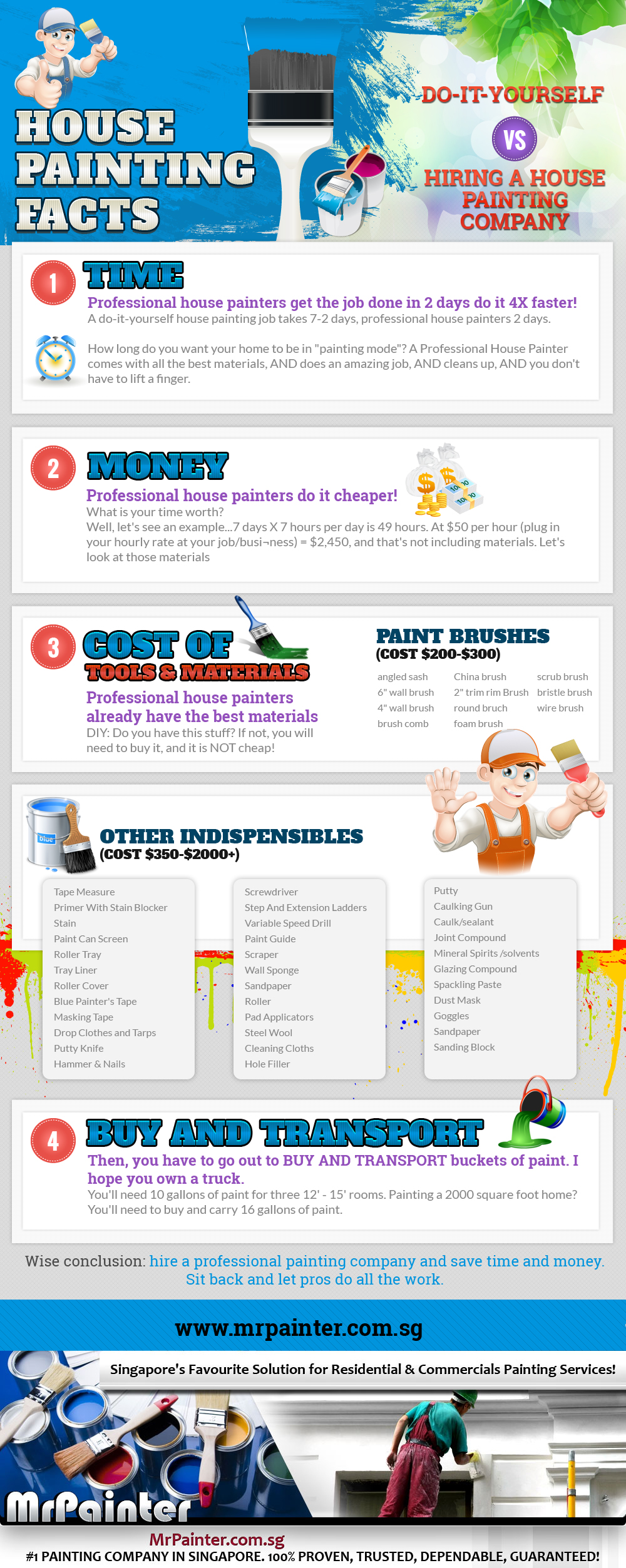Variables To Consider For Industrial Outside Paint By Period: Important Info You Ought To Have
Variables To Consider For Industrial Outside Paint By Period: Important Info You Ought To Have
Blog Article
Material Author-Burnham Browne
When you're planning a commercial exterior paint job, seasonal variables can make or break your results. You'll wish to take into consideration exactly how temperature level and humidity influence paint application and drying out times. Selecting the right season can ensure your paint adheres correctly and lasts much longer. However which seasons are absolutely the best for this type of work? Allow's explore the key elements that can influence your project's success.
The Impact of Temperature on Paint Application
When you're planning an industrial external paint job, the temperature can significantly influence exactly how well the paint adheres and dries.
Ideally, you intend to paint when temperatures vary in between 50 ° F and 85 ° F. If it's too chilly, the paint might not treat appropriately, causing problems like peeling or breaking.
On the flip side, if it's as well hot, the paint can dry too promptly, stopping proper bond and resulting in an uneven surface.
You ought to also think about the time of day; morning or late afternoon uses cooler temperature levels, which can be a lot more beneficial.
Always check the maker's referrals for the details paint you're using, as they frequently offer assistance on the optimal temperature array for optimal results.
Humidity and Its Effect on Drying Times
Temperature isn't the only environmental factor that affects your commercial outside paint project; moisture plays a substantial role too. High humidity levels can slow down drying out times drastically, affecting the overall high quality of your paint job.
When the air is filled with moisture, the paint takes longer to heal, which can bring about problems like inadequate adhesion and a greater threat of mold growth. If you're repainting on a specifically damp day, be gotten ready for extended delay times between coats.
It's important to keep track of neighborhood weather conditions and plan accordingly. Preferably, go for relevant web page between 40% and 70% for ideal drying out.
Maintaining https://www.popularmechanics.com/home/interior-projects/how-to/g110/interior-painting-tips-how-to-paint-your-walls-like-a-pro/ consider mind guarantees your task stays on track and provides a long lasting coating.
Best Seasons for Commercial Outside Painting Projects
What's the best time of year for your commercial external paint jobs?
Spring and very early loss are commonly your best options. During these periods, temperatures are mild, and moisture levels are usually lower, creating perfect conditions for paint application and drying.
Stay clear of summertime's intense heat, which can trigger paint to completely dry too quickly, bring about bad adhesion and coating. Likewise, winter months's cold temperatures can hinder proper drying out and treating, risking the durability of your paint job.
Aim for days with temperature levels in between 50 ° F and 85 ° F for optimal results. Bear in mind to check the regional weather prediction for rain, as damp problems can wreck your job.
Preparation around these aspects ensures your paint job runs efficiently and lasts longer.
Final thought
In conclusion, planning your industrial external painting projects around seasonal considerations can make a substantial difference in the result. By scheduling job during the suitable temperature levels and humidity degrees, you'll guarantee much better adhesion and drying times. Bear in mind to keep an eye on neighborhood weather prediction and choose the right time of year-- spring and early loss are your best bets. Taking these steps will help you achieve a resilient and professional coating that lasts.
